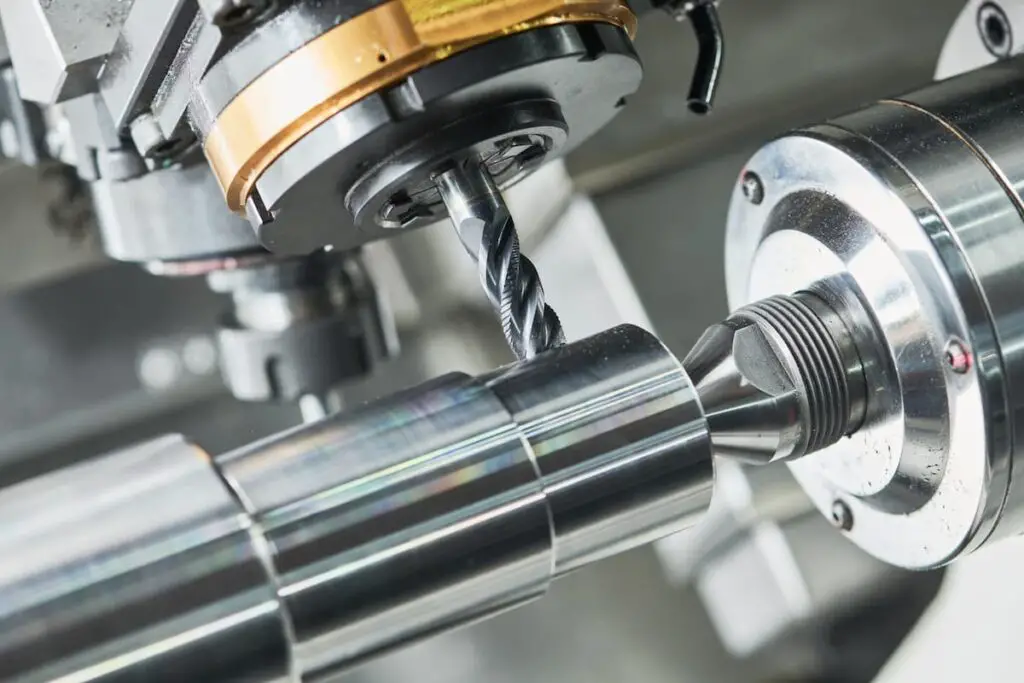CNC bits are arguably one of the most important parts of your machine, but they don’t last forever. It’s certainly possible to sharpen CNC bits, but you’ll want to know how to tell if they are getting blunt in the first place before you jump the gun and alter an otherwise serviceable bit.
You can tell if a CNC bit is dull by inspecting it visually for chips or burning. It may not be possible to visually identify a worn bit; however, if you are getting a poor surface finish or your machine sounds like it is struggling more than usual, this can also be caused by a dull bit.
Naturally, you wouldn’t want to throw out or sharpen a bit that isn’t worn just yet, so we will discuss the signs and symptoms of a dull CNC bit below. You might find when working with an unfamiliar material that your bit doesn’t perform as well as it normally does, there are also some materials that will wear bits out faster than others.

How Can I Check if My Router Bit Is Still Sharp?
There are a few telltale signs you can look out for if your bit is getting dull. If you are beginning to wonder about it, there’s a good chance your suspicions may be correct.
Visual Signs Your Bit Is Dull or Worn
If you take a gander at your CNC bit, any chips or rough edges are an immediate indication that you either need to sharpen or replace it.
A less obvious sign that your bit is worn is a shiny, mirror-like edge – you may have to hold it up to a good light to see it. The worn edges become “polished” by the material rather than cutting through it.
Finally, if you notice any burns or blackness, it is a good indicator that the bit has worn beyond its useful limits. In this instance, your best bet may be to replace it.
The Nail Test
A simple and easy way to check your CNC bits for sharpness is by using your nail. To do the nail test, make sure the bit is not in the machine – you could end up with a serious injury in the event that it starts up while you are doing this.
If you scrape your thumbnail gently with the cutting edge of your CNC bit, you should be able to feel the sharp edge dragging on your nail and see a line in your nail where you scraped it. If not, the bit is likely no good.
Performance Issues
Another sign your CNC bit is worse for wear will only be evident when you are trying to run a job on your router.
If your CNC router sounds like it is working harder than usual or running faster than usual, these can both be signs that the bit is worn. A worn bit will not cut as effectively, prompting your machine to work harder – this can translate into your machine running at a higher RPM./87
Rough Cuts/Edges on Your Workpiece
If your workpieces require more hand finishing than usual, this is another good indicator that your router bit is getting worn.
A dull CNC bit will almost invariably cut poorly – if this is something you are noticing, especially if any of the other symptoms have shown up, you are likely in the market for a new bit at this point.
You Smell Material Burning
Dull CNC bits don’t cut all that well, as we have already explained. Rather than cutting through the material, it generates friction and burns the workpiece.
If you are cutting plastic or wood, a burning smell is a dead giveaway for a worn CNC bit. You may also notice burning on the workpiece itself or melted edges in the case of synthetic materials.
What To Do if Your CNC Bit Is Dull
You have now determined that your CNC bit is not in good shape. No need to throw it out just yet – depending on how far gone it is, you have a few options at your disposal.
You can sharpen your CNC bit using hand or rotary tools or take it to a professional bit sharpening service in your area. Most good machine shops should be able to get your bit back into cutting shape.
Not All Bits Can Be Sharpened
There are some cases where you will be better off replacing your CNC bit rather than trying to sharpen it.
Bits with chips in them are not good candidates for sharpening. Deep chips will necessitate the removal of more material to give the bit a cutting edge, which can significantly alter its dimensions.
Another thing you need to weigh up is the cost of sharpening versus the cost of replacement – it can be more time and effort getting a cheap bit sharpened than it’s worth, especially since you will have to compensate for the altered dimensions.

Prevention Is Better Than the Cure
Taking care of your bits properly will help you get more life out of them. Here are some tips on taking care of yours so they don’t dull prematurely:
- Clean your bit after use – use a solvent (alcohol, for example) and a brush to remove any debris.
- Only use your bit for the materials it is rated for – cutting a material harder than your bit is designed for will quickly blunt it.
- Use a diamond hone to dress the edges – lightly sharpening the cutting faces of your bit after use will keep them in good shape for longer.
- Store your bits correctly – tossing all your bits into a box where they can rattle around will damage them. Keep them individually packaged, or at least secure them so they don’t roll around in your toolbox.
Even with proper care, you cannot expect your bits to last forever. It’s a bad idea to run your machine with a dubious bit since this can put extra strain on the bearings in your spindle, which are much more difficult and costly to replace.
How Long Do Router Bits Last?
Router bits can last a long time with proper care and use, but they will eventually wear out. It entirely depends on the type of bit and the material you are trying to cut.
Router bits can last for up to 2 years if used and maintained correctly, but they will eventually begin underperforming and require sharpening or replacement.
If you use your router bits to cut harder materials than they are rated for, they will naturally degrade faster than usual. For example, if you’re using an HSS (high-speed steel) bit to cut metal, it will likely degrade quickly.
Up next, here’s an article about Thingiverse and potential alternatives . It should help you discover more online resources to get ideas of what to build with your CNC machine.
. It should help you discover more online resources to get ideas of what to build with your CNC machine.
Conclusion
It happens – CNC bits will inevitably get dull over time. It’s usually not too difficult to tell when they are getting tired by paying attention to the condition of the edges and looking out for the signs listed above.
You can resharpen a dull CNC bit, but it isn’t always worth it because doing so changes the dimensions, and you wouldn’t want to lose time on a job after grabbing a bit out of your kit and forgetting to compensate for these changes.
